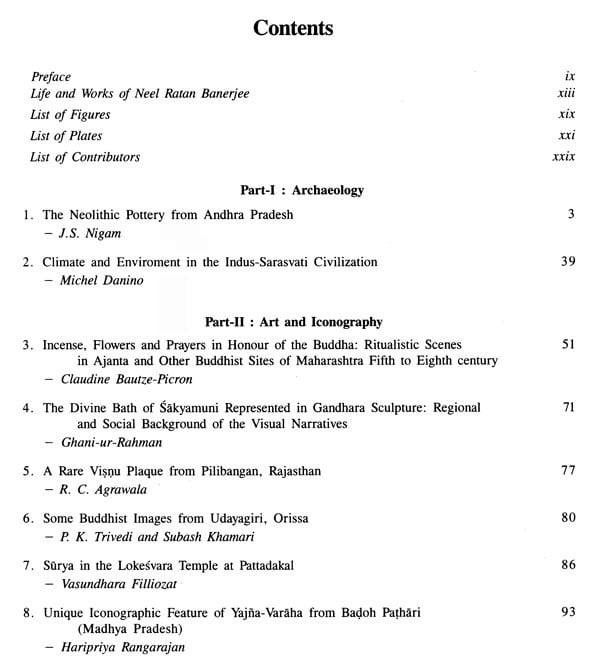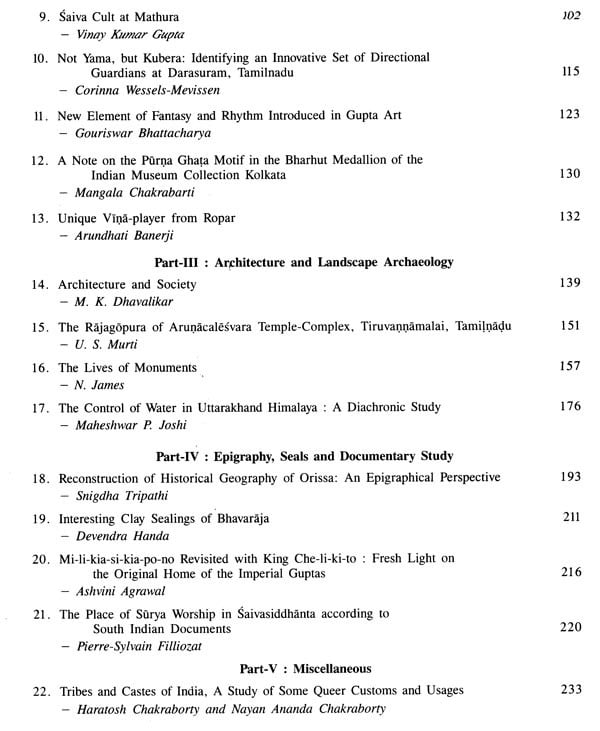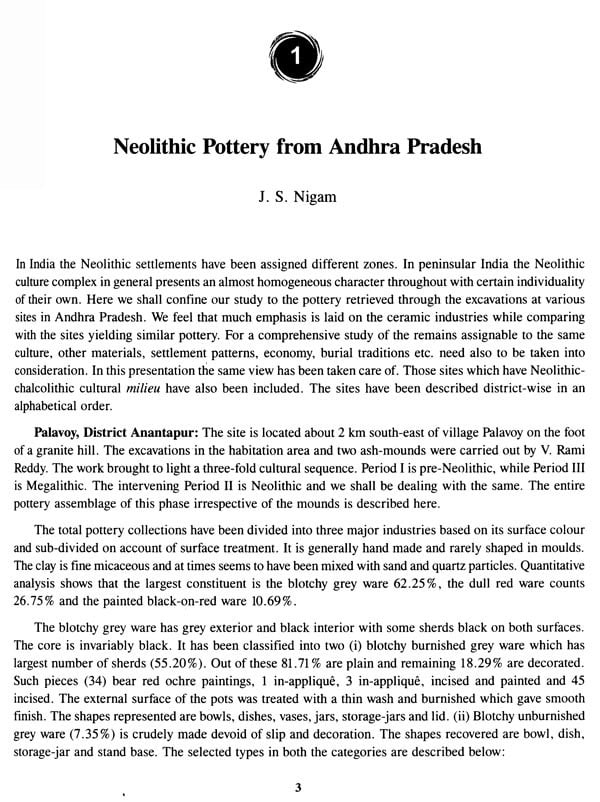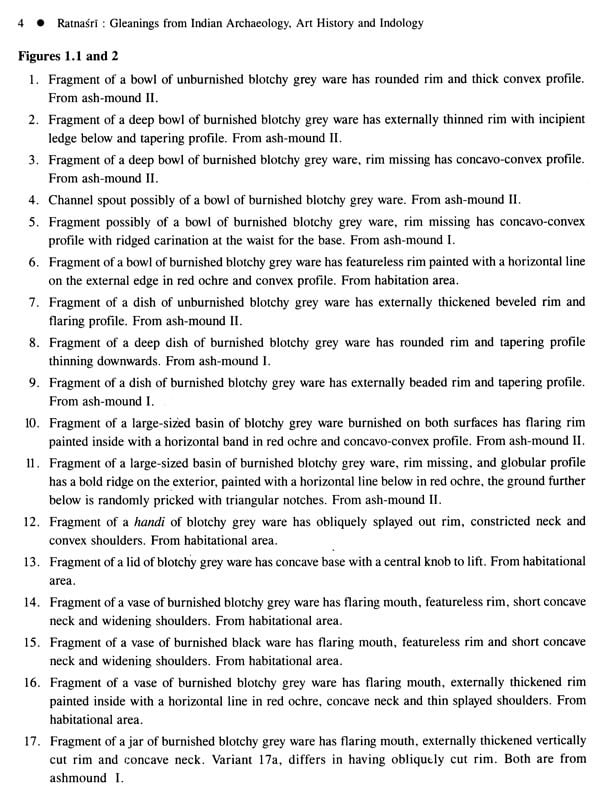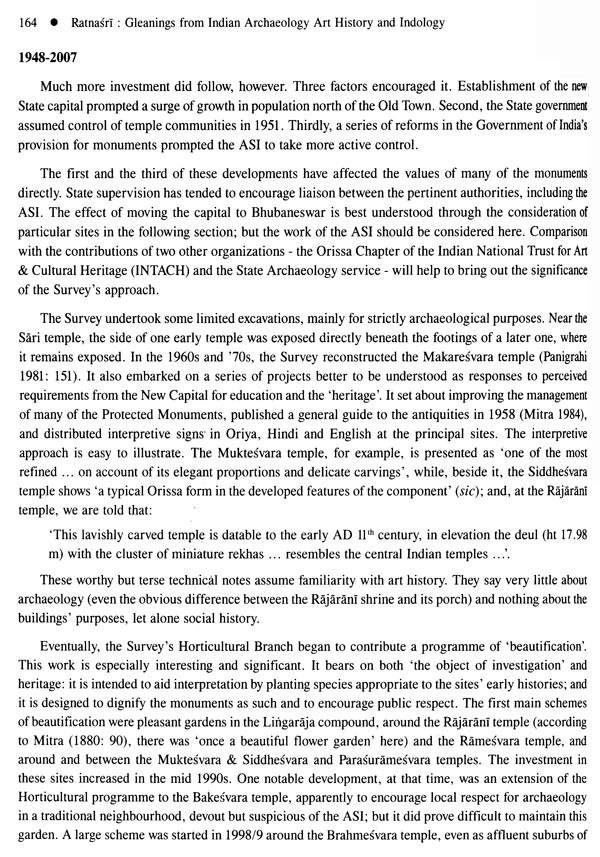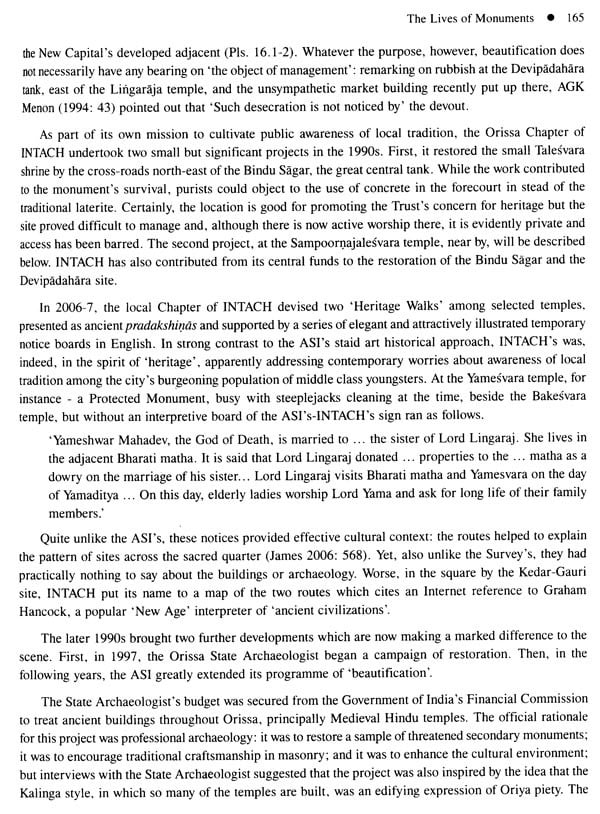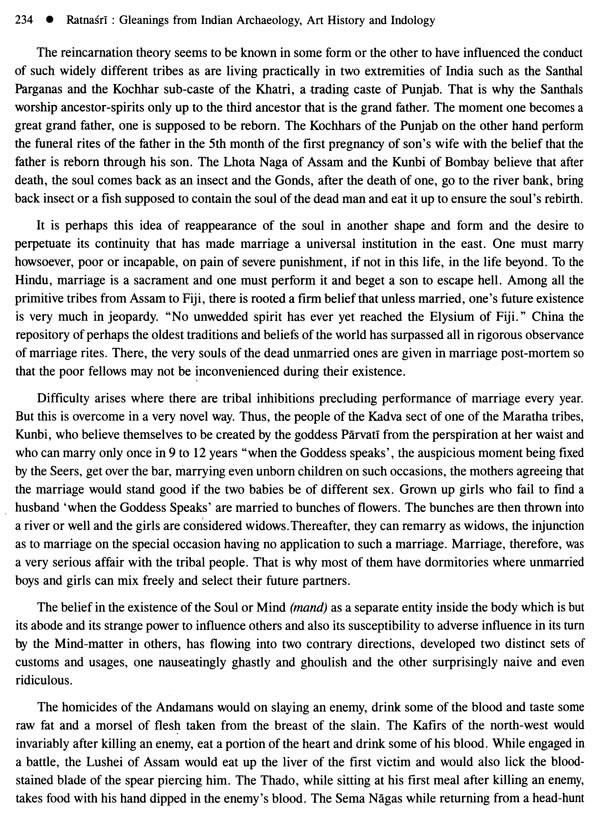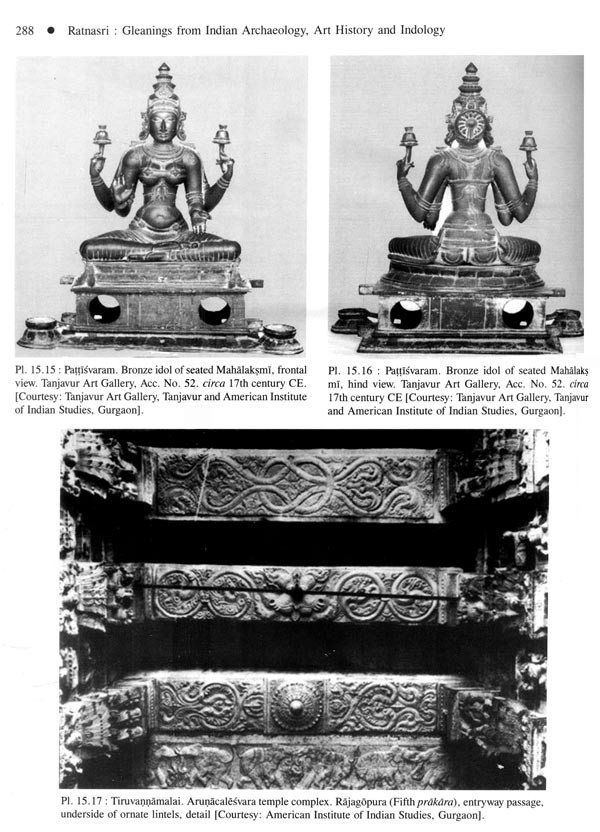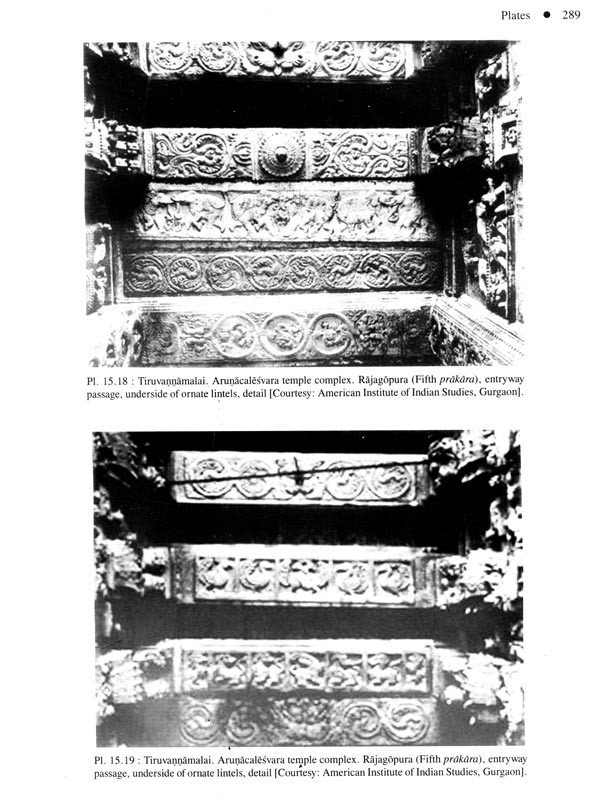
Ratnasri- Gleaning from Indian Archaeology, Art History and Indology (Papers Presented in Memory of Dr. N.R. Banerjee)
Book Specification
| Item Code: | AZG308 |
| Author: | Arundhati Banerji |
| Publisher: | KAVERI BOOKS |
| Language: | ENGLISH |
| Edition: | 2015 |
| ISBN: | 9788174791641 |
| Pages: | 316 (Throughout B/w Illustrations) |
| Cover: | HARDCOVER |
| Other Details | 11.00x9.00 inch |
| Weight | 1.28 kg |
Book Description
The papers included herein are the outcome of researches done on archaeology, art, architecture, epigraphy, iconography, landscaping, monuments and seals, over the years besides reminiscences from some of his close friends and associates who always held Dr. Banerjee in high esteem.
These papers, with notes, references and bibliography are well illustrated and are grouped into five sections, viz., Archaeology, Art and Iconography, Architecture and Landscape Archaeology, Epigraphy, Seals, Documentary Study, and Miscellaneous.
Besides is the editor of Indian Archaeology Review and all other publications brought out by Archaeological Survey of India. centenary issue of Journal Indian Society for Oriental Art also jointly edited her. She travelled widely India abroad connection with study and research. Recently participated XXth South Asian Archaeological Conference European Archaeologists at Vienna (Austria) and was distinguished speaker The Symposium Buddhist Sculptures the Victoria Albert Museum, London. Banerji relentlessly worked to update the Publications of Survey besides she also committed her research on Indian history.
The Section 1 of this volume deals with the study of excavated Neolithic pottery from Andhra Pradesh by J.S. Nigam. He has divided the region according to the excavated sites district-wise, based on the types of pottery. The author feels that in Peninsular India, the Neolithic Cultural Complex bear certain homogenous character throughout, marked by some individual character of its own the time bracket for which ranged 1400 years approximately.
Michel Damino in his paper 'Climate and Environment in the Indus-Sarasvati Civilization' stresses that the role of climate and environment in the expansion and fall of the Indus-Sarasvati civilization is less clear. The author has made region-wise study to reconstruct a precise ecological history of the north-west during the Harappan time. He feels it is difficult to trace a single environmental framework to account for the deurbanization witnessed over the whole region from about 2000 BCE as the region is spread over a realm of almost one million square kms. The author has done a region-wise study on the environmental situation.
In Section II there are papers on Art and Iconography which begins with the study "Incense, Flowers and Prayers in honour of the Buddha' contributed by Claudine Bautze-Picron which describes he ritualistic scenes in Ajanta and other Buddhist sites of Maharashtra from 5 to 8 century. The aves of Ajanta display the image of Buddha to the outer world but there is a change noticed in Aurangabad where ground plan has been altered in the second period of excavation (Cave 6). Here major groups of devotees-donors are exclusively seen at the feet of the Buddha in the sanctuary as bserved at Ajanta. There is no scene of worship and rituals practiced by monks and lay persons. She cels that the presence of devotees was here most probably bound to the fact that these were the enerous donators having allowed the realization of the monument. The next step at Ellora shows the Osence of devotees even the first five disciples are no more carved at the feet of the teaching Buddha. uthor further states that the attention shifted from devotion to visualization in the course of this eriod with the divine image emerging within the one who meditates, and this implied somehow that ojecting oneself within an external (material) divine image had become unnecessary.
Ghani-ur in his paper narrates one of the important events from the life of Buddha which include e scene of divine Bath after the birth.
**Contents and Sample Pages**

